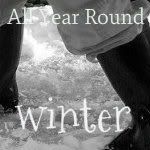Winter Night Sky
 |
| 2/2/09 |
 |
| 2/2/09 |
They found the two Dippers, and the North Star. Katie also found and showed us Cassiopeia. We will study this constellation (HNS, lesson 225) as well this week and draw this in their nature journals.
Another constellations to look in the winter sky is Orion (HNS, lesson 226).
"Orion is one of the most beautiful constellations in the heavens. It is especially marked by the three stars which form Orion's belt, and the line of stars below the belt which form the sword."-
Handbook of Nature Study page 825
 |
| 2/21/08 |
 |
| 2/21/08 |
We often look at the moon at night, especially when it is full. Three years ago Katie and Sam spent two hours viewing a lunar eclipse. They would come in to get warm and then go back out again. They were totally awed by it.

Are you looking forward to making some winter memories?


